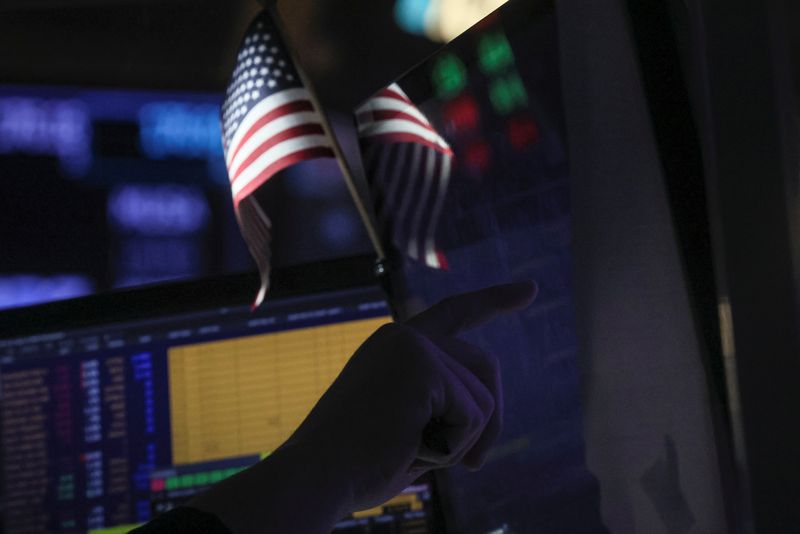By Saqib Iqbal Ahmed
NEW YORK (Reuters) - U.S. stocks' tendency to move in sync has plunged to near-record lows, but what might seem like a stock picker's dream may actually be a mirage, and investors may be in for a rude awakening.
S&P 500 correlation - a gauge of herd behavior, which measures how closely daily returns of index constituents align over a month - slipped to 0.22 at the end of June, close to the lowest since November 2021, according to data from S&P Dow Jones Indices. That means that many stocks are moving in different directions.
Investors expect stocks to move increasingly out of sync as shown by the Cboe 3-Month Implied Correlation Index, which measures the 3-month expected average correlation across the top 50 value-weighted S&P 500 stocks. The Index touched a record low of 17.59 on Wednesday.
That would typically lower risk and offer more opportunities for stock pickers. But with the bulk of the market's gains being driven by a handful of mega cap names and a crowd of market bets on continued low correlation, investors may be relying on a false sense of calm.
"The risk metrics that look quiescent and favoring idiosyncrasy may in fact be a chimera much more vulnerable to a macro shock than implied currently," said Arnim Holzer, global macro strategist at EAB Investment Group.
History suggests such narrow breadth can set the market up for a sudden surge of volatility.
"From these low levels of stock correlations, equity volatility has historically risen," UBS strategists said in a note on Wednesday.
The Cboe Volatility Index, the so-called Wall Street 'fear gauge,' which recently closed at it lowest in nearly 3-1/2 years, has generally jumped by 10 points over the coming quarter when 1-year stock correlations have been at the current low levels, the strategists said.
The last time 3-month implied correlation got this low was in early 2018, just before the February 2018 urge in market volatility dubbed 'Volmageddon.'
The low correlation now is in stark contrast to late last year when investors were laser-focused on macro factors including employment, growth and inflation, leading stocks to move in sync.
This year, however, with the U.S. Federal Reserve close to the end of its hiking cycle, economic data has lost some of its ability to sway stocks en masse.
Much of today's low stock market correlation has to do with the gulf in performance between a handful of mega caps driving the benchmark index higher and the rest of the market.
While the S&P 500 has gained 16%, its equal-weight equivalent, which dilutes the impact of the largest companies in the index, has risen just 6%.
That leaves less room to pick winners.
"You have this view in the market that this is a stock picker's market because correlation is low," EAB Investment Group's Holzer said.
"The problem is that this is not that environment," he said.
For some investors, it also means thinking outside of large caps.
"Given the narrowness of the market so far this year, we suggest investors consider an S&P equal-weight strategy or U.S. mid-caps for cash earmarked for U.S. large caps," said Jack Ablin, chief investment officer of Cresset Capital.
"History suggests the average stock will 'catch up' with the mega caps over the next 12 months," Ablin said.
COILED MARKETS
One trade that has drawn investors in recent months is the so-called long dispersion trade - where traders sell index volatility while buying volatility on constituents - essentially betting on individual stocks not being strongly correlated, Kris Sidial, co-chief investment officer of volatility arbitrage fund the Ambrus Group.
This, in addition to general selling of volatility as markets skipped higher this year, has crushed volatility and correlations.
"It's a big pile-on into short volatility and short correlation," Sidial said.
But that also sets up the stage for a rapid upheaval when the calm breaks.
"When you have one side of the market that has piled into a trade, when that trade unwinds, it can be very rapid," he said. said.
For investors, the pricing on index hedges that would guard against a big jump in volatility is more attractive than it has been for a while.
"Because correlations are so low, index options have gotten incredibly cheap," said Daniel Kirsch, head of options at Piper Sandler said.
